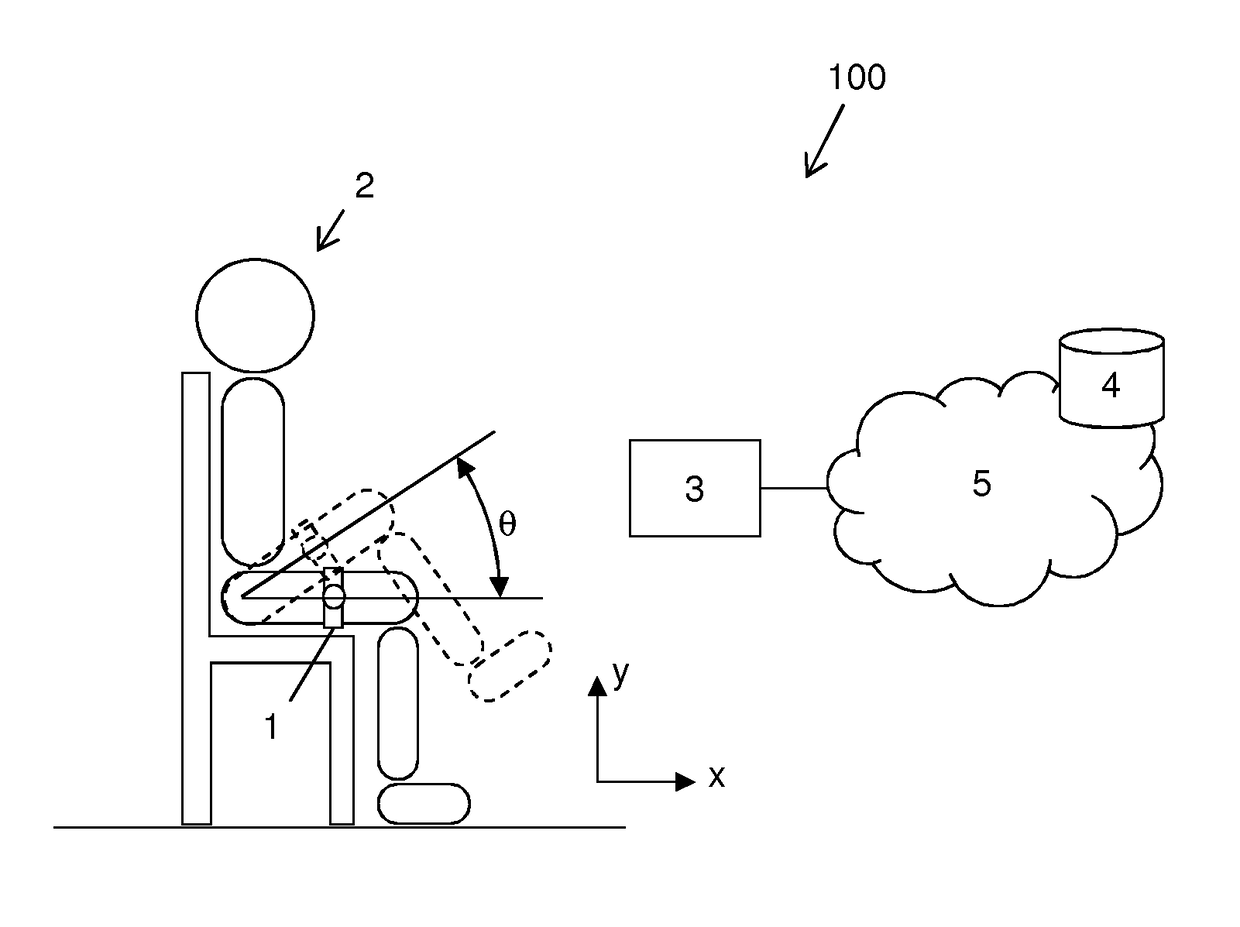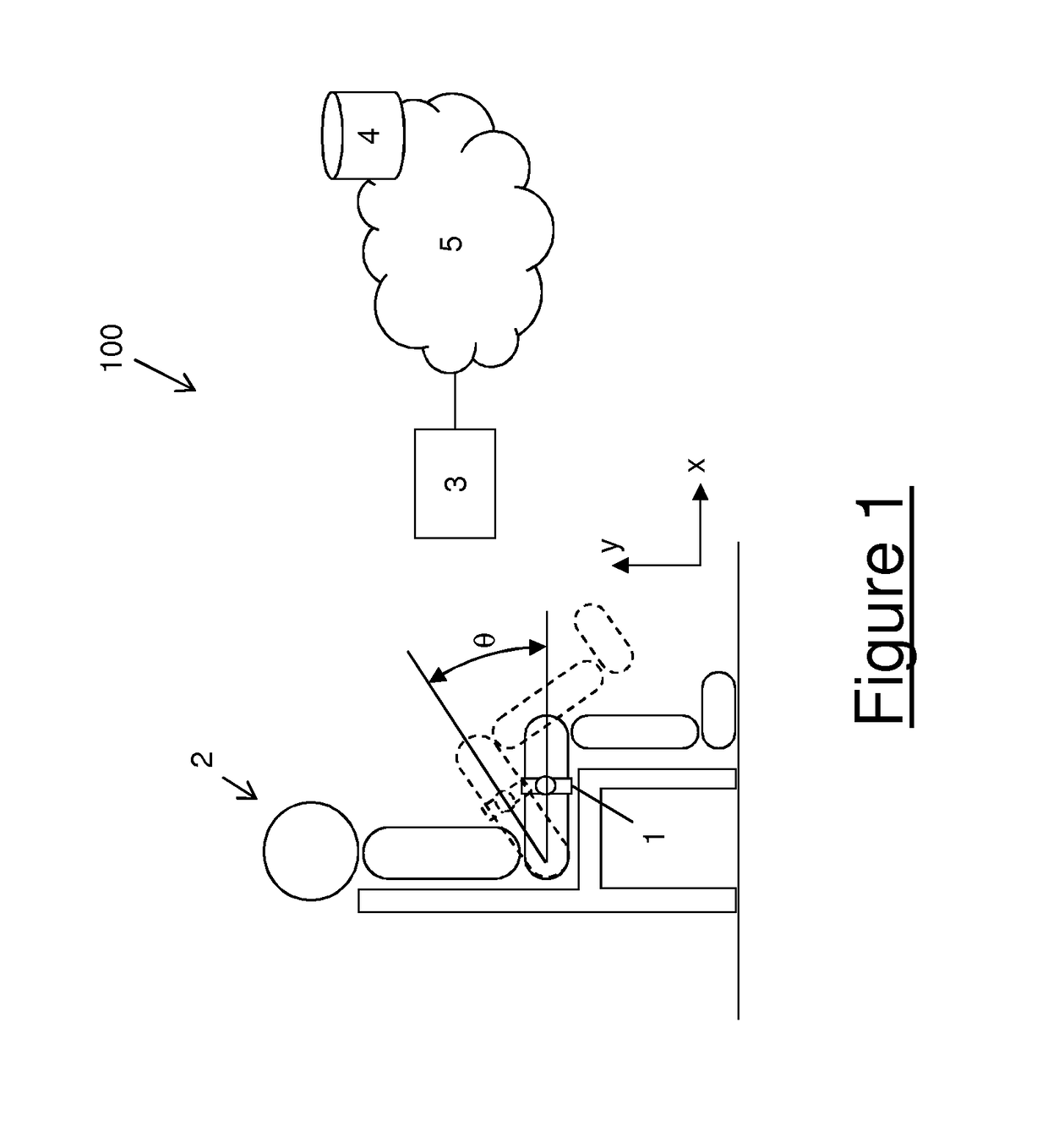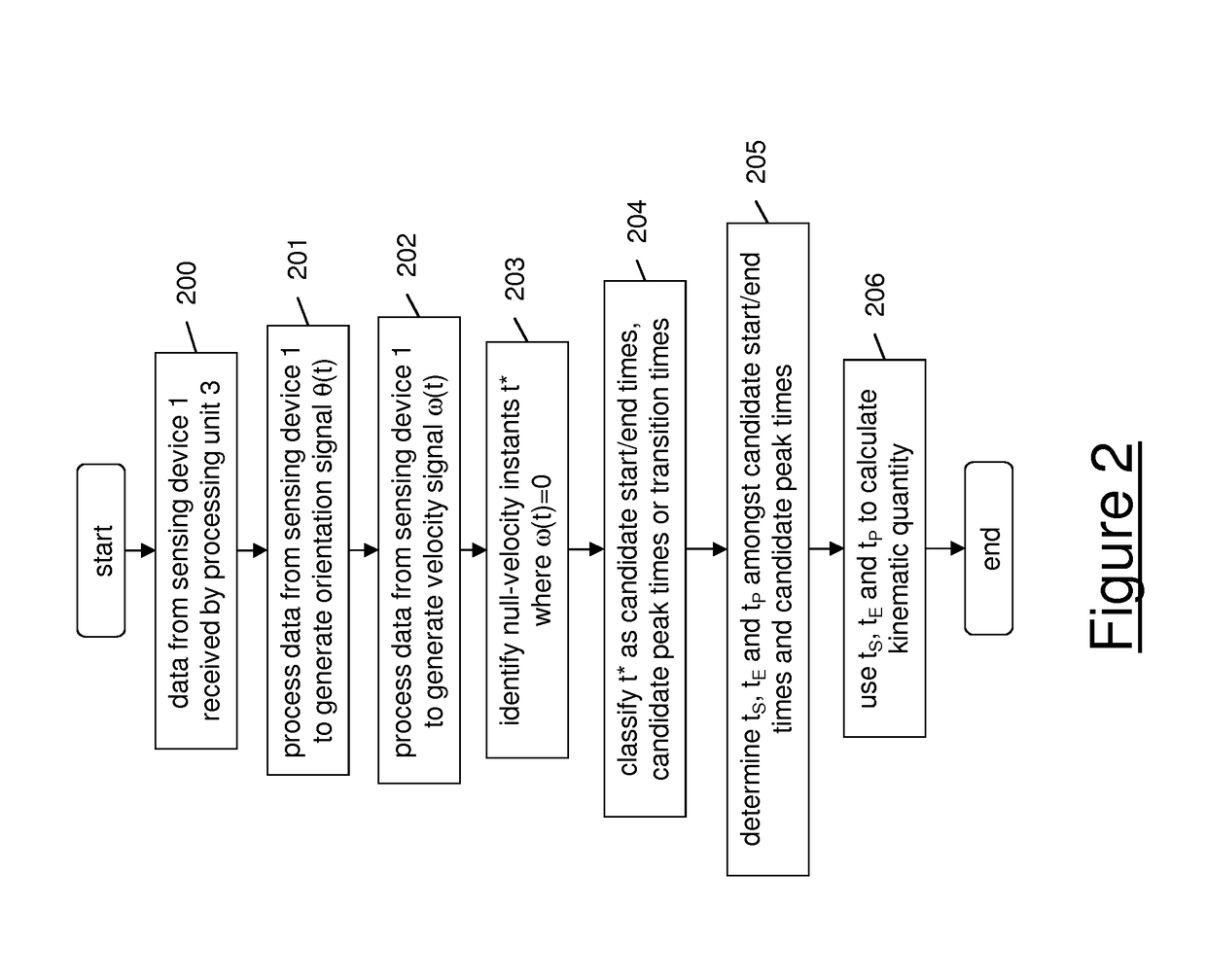System and method for monitoring the movement of a part of a human body
- Summary
- Abstract
- Description
- Claims
- Application Information
AI Technical Summary
Benefits of technology
Problems solved by technology
Method used
Image
Examples
Embodiment Construction
[0054]With reference to FIG. 1, a system 100 for monitoring the movement of a part of a human body such as a limb will be now described in detail. The system 100 preferably comprises a sensing device 1 suitable for being fixed to the limb of a user 2, to sense the movements of the limb and to provide data indicative of the movement of the limb. The sensing device 1 preferably comprises an accelerometer and / or a gyroscope. Optionally, the sensing device 1 also comprises a magnetometer. According to a particularly preferred variant, the sensing device 1 is an inertial sensor. As known, an inertial sensor comprises at least one accelerometer (typically, a triaxial accelerometer) suitable for detecting accelerations along the three axis of an arbitrarily chosen coordinate system, at least one gyroscope (typically, a triaxial gyroscope) suitable for detecting changes in rotational attributes (such as pitch, roll and yaw) with reference to an arbitrarily chosen coordinate system and, opti...
PUM
 Login to View More
Login to View More Abstract
Description
Claims
Application Information
 Login to View More
Login to View More - R&D
- Intellectual Property
- Life Sciences
- Materials
- Tech Scout
- Unparalleled Data Quality
- Higher Quality Content
- 60% Fewer Hallucinations
Browse by: Latest US Patents, China's latest patents, Technical Efficacy Thesaurus, Application Domain, Technology Topic, Popular Technical Reports.
© 2025 PatSnap. All rights reserved.Legal|Privacy policy|Modern Slavery Act Transparency Statement|Sitemap|About US| Contact US: help@patsnap.com



